A Comprehensive Guide to Growing Jujube Trees (Ziziphus jujuba): From Seed to Harvest
The jujube tree (Ziziphus jujuba), also called the Chinese date tree, is one of the most drought-tolerant fruit trees you can grow. Prized for its resilience, sweet fruit, and ornamental appeal, it has been cultivated for more than 4,000 years and is now widely grown across Asia, the Middle East, and parts of the United States.
If you’re wondering what is a jujube tree, how to grow it successfully, or how to germinate jujube seeds, this practical guide will walk you through every stage—from planting and germination to care, harvesting, and long-term maintenance.

What Is a Jujube Tree?
A jujube tree is a deciduous fruit tree that produces small, oval to pear-shaped fruits that are about 1 to 2 inches in diameter. The fruits start green and crisp like apples, then turn brown and chewy as they ripen, resembling dried fruits or dates—hence the nickname Chinese date.
Mature jujube trees typically reach 15 to 30 feet tall, with shiny green leaves and graceful, drooping branches. The trees thrive in full sun, tolerate a wide range of soil types, and are among the easiest fruit trees to grow in warm, dry regions.
Why Grow Jujube Trees?
Jujube trees are loved for their many advantages:
- Drought tolerant once established
- Low maintenance and pest resistant
- Can thrive in drained soils where other fruit trees struggle
- Produce high yields of nutritious, long-storing fruit
- Adaptable to cold winters (in USDA zones 6–9)
They’re perfect for gardeners who want a beautiful, productive, and resilient fruit tree that asks for little but gives a lot.

Popular Jujube Varieties
When you decide to grow jujube, choosing the right cultivar makes a big difference in flavor and harvest style.
- Li Jujube: Large, round fruits that are great for fresh eating and drying.
- Lang Jujube: Distinctly pear-shaped, perfect for making dried jujube.
- Honey Jar Jujube: Small, crisp, and very sweet—ideal for snacking.
- Shanxi Li Jujube: Produces large, flavorful fruits excellent for fresh eating.
Explore all varieties available in the jujube trees collection at GrowOrganic.com.
Ideal Conditions for Growing Jujube Trees
Soil and Drainage
Jujubes grow best in well-drained soils, ideally sandy loam, but they can adapt to clay or rocky soil if drainage is good. Poor drainage can lead to root rot, so raised beds or mounds are helpful in wet areas.
Maintain a soil pH between 5.5 and 7.5 for optimal growth. You can learn more about understanding soil pH or use soil pH testing kits to monitor your garden’s levels.
Sunlight and Temperature
Jujube trees thrive in full sun, requiring at least 6–8 hours of sunlight each day. They prefer hot summers but can handle cold winters in their hardy zones.
Soil Preparation
Before planting, loosen compacted soil and mix in compost or aged organic matter to improve fertility and drainage.

How to Germinate Jujube Seeds
Growing jujube from seed is rewarding but requires patience. It’s ideal if you want to propagate your own trees or experiment with different varieties.
Steps for Jujube Seed Planting
- Extract and Clean: Remove jujube seeds from ripe fruit and clean off all pulp.
- Soak the Seeds: Soak them in warm water for 24 hours to soften the hard shell.
- Cold Stratify: Place the seeds in moist sand or peat moss and refrigerate for 6–8 weeks to mimic winter dormancy.
- Planting: Sow seeds about ¼ inch deep in well-drained soil in small pots or seed trays.
- Germination: Keep the soil slightly moist. How to germinate jujube seeds successfully depends on warmth—maintain a temperature around 75°F for steady sprouting.
Germination can take several weeks to months. Once the seedlings are a few inches long, transplant them carefully outdoors after frost danger passes.
Tip: Seed-grown trees may take 6–8 years to fruit and can vary from the parent tree. Many gardeners use seedlings as rootstock for grafting named varieties.
How to Grow a Jujube Tree from a Nursery Plant
Most gardeners prefer grafted trees for faster fruiting and predictable results.
- Choose a sunny location with drained soil.
- Dig a hole twice the width of the root ball and the same depth.
- Backfill with a mix of native soil and compost.
- Water deeply after planting and mulch to retain moisture.
To learn whether jujubes suit your region, check your growing zone.
Jujube Care Tips
Watering
Young trees require regular watering during the first growing season. Once established, trees require little irrigation except during prolonged dry spells. Use soaker hoses for sale to provide deep, even moisture directly to the roots.
Fertilization
Feed trees each spring with a balanced organic fertilizer or compost. Avoid over-fertilizing, as excessive nitrogen can reduce fruiting.
Pruning
Prune in late winter to remove dead or crossing branches. Maintain an open canopy for sunlight and airflow.
Pest and Disease Prevention
Jujubes are naturally pest-resistant, but if needed, manage occasional aphids or mites using insecticidal soaps or neem oil. For fungal issues, horticultural oils can help protect foliage.

Harvesting Jujube Fruits
Jujube fruits can be eaten freshly when crisp and greenish-yellow or allowed to ripen to a deep brown for dried jujube. They can also be sun-dried or dehydrated to make chewy, sweet dried fruit snacks.
Harvest usually occurs from late summer through fall. Trees may continue producing for decades with good care.
Conclusion
If you’re seeking a hardy, drought-tolerant fruit tree that thrives in a wide range of soil types, the jujube tree (Ziziphus jujuba) is a fantastic choice. From learning how to germinate jujube seeds to mastering jujube care, growing this ancient Chinese date rewards you with beauty, resilience, and delicious fruit for years to come.
Explore jujube trees for sale at Grow Organic and start your own orchard today.



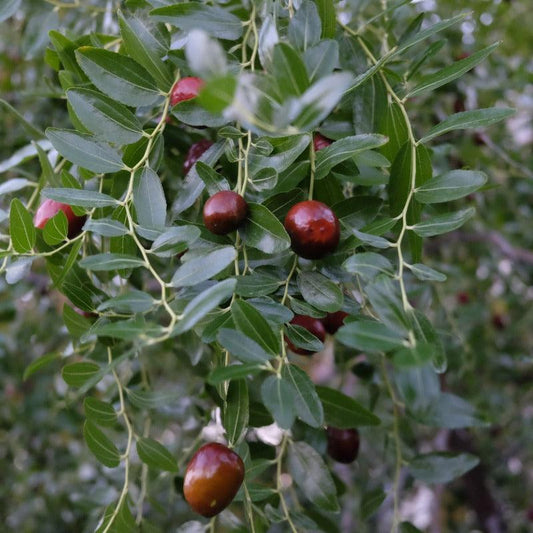
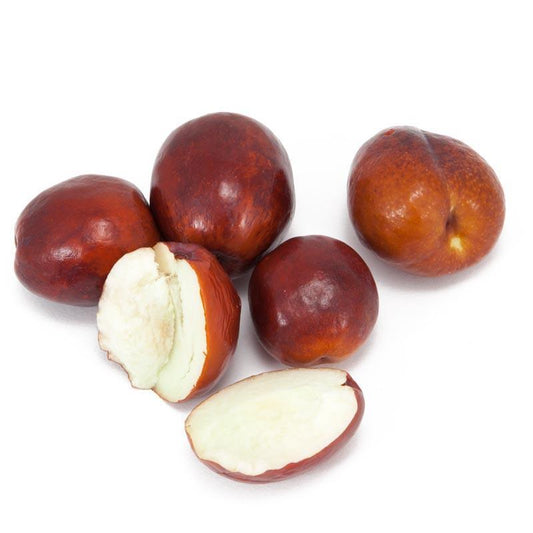
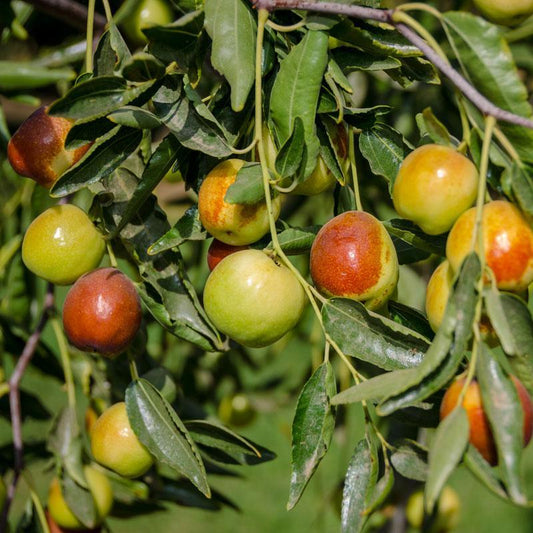
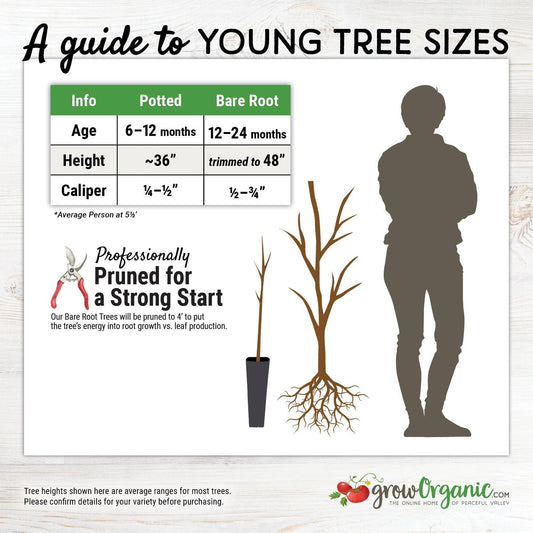
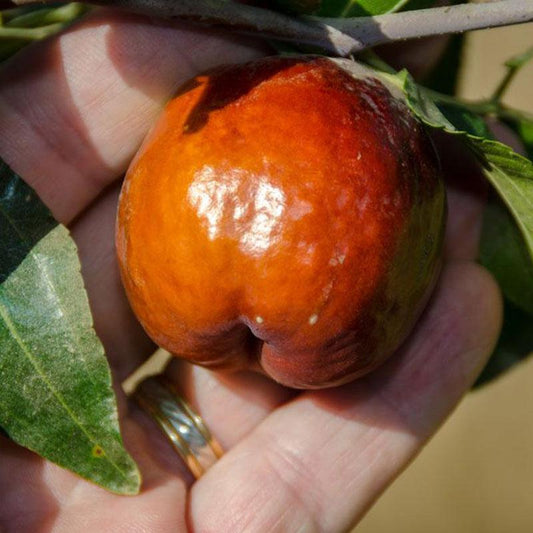
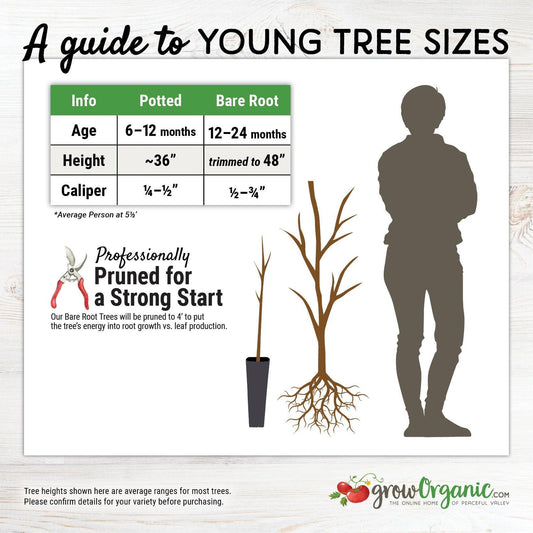
32 comments
Bob, you can try and plant the seeds, but it will most likely take years for the tree to develop fruit.
I have been getting Seedless Jujube Dates for years and on my last order they all had full seeds. Can these seeds be grown and If so, how?
It seems jujube trees grow up to 20+ feet, is it easy to control the height by pruning?
Does it need two Jujube trees to cross pollinate? Thanks for your help.
Evita, no multi-grafted jujube trees are available from our grower.
Will you be offering multiple grafted jujube trees in the near future?